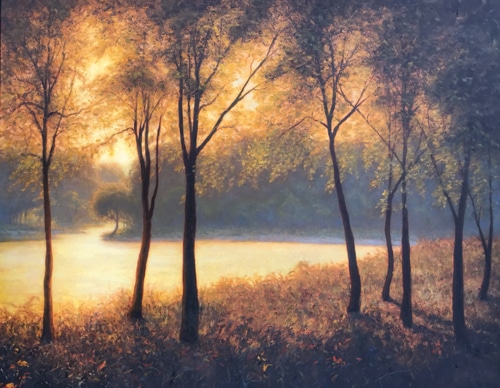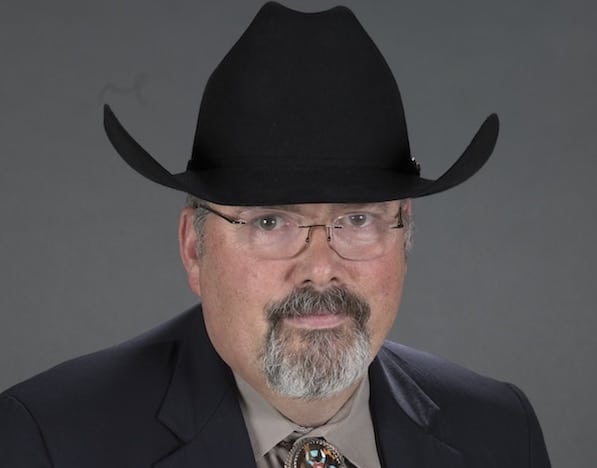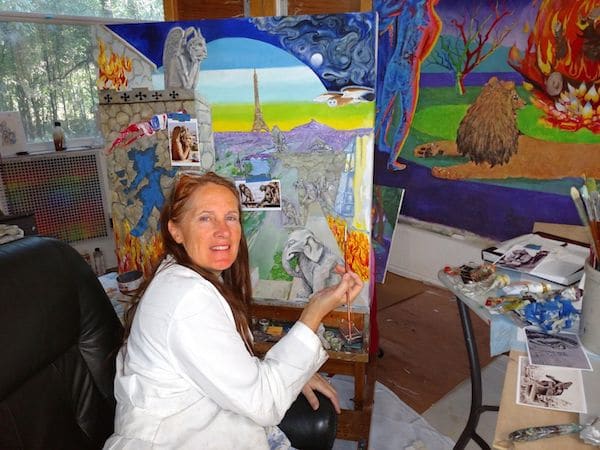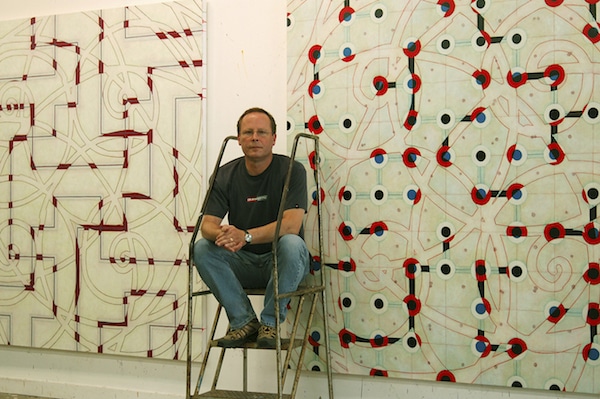 2017 Accelerator Fellow
2017 Accelerator Fellow
Where did you grow up?
Aberdeen, Maryland.
When/how did you first know that you wanted to be an artist?
As early as I can remember. My grandmother was an amateur painter, and my mom liked to draw. My dad was a systems analyst for the US Army and did a lot of work with computers. This was back when computer printers were spool-fed, so the paper had holes on two sides and perforated borders that made it larger than the standard 8.5- x 11-inch sheet. It came in piles of 100 or 200 pages, and most of the sheets that Dad brought home had meaningless numbers on one side of a few pages, while the rest were blank. My three brothers and I would use it for everything, and I think that’s how my love of paper started.
Where do you currently live/work, and how would you describe the arts community there?
I live in Sparks, Maryland, and I work in Baltimore, where the arts community is large and active. The city is an affordable place to work and has a lot of industrial suppliers and maker spaces. Unfortunately, the area’s art-buying public tends to go to New York and looks down on local artists, at least at the high end of the market.
How would you describe your art to someone who’s never seen it?
I create cut-paper and cut-metal sculptures, and my art is about nature and abstraction. I start with a photograph, usually from my own garden or the fields around my house. (The only exceptions are the portraits I’ve done of my grandparents, which were inspired by family photographs.) Then I spend six to eight months drawing these images into a computer file.
These files are then broken down into sizes that are small enough for a laser cutter to load, and the image is cut out of paper or metal. Sometimes as many as ten separate files have to be aligned to create a 20″ x 30″ panel. One of my drawings has 27 different panels.
Lately, I have been drawing the same image three times and stacking the drawings, which allows the viewer to see each image through the others. By doing this, as well as adding color to the different layers, I am able to create the depth I want for the finished piece.
What do you hope to communicate to your audience?
That beauty is all around us and we’d better notice it before we destroy it. Take my piece Definition of a Monoculture, which is a panoramic view of a cornfield. The dictionary definition of the word “monoculture” (the cultivation of a single crop in a given area) is etched into the paper below the drawing and cut-out, and I also dropped out the letters in the name Monsanto [the agribusiness giant that sells genetically modified organisms]. Do we want one large company to have so much control over our food supply?

What’s been your biggest business challenge?
Selling. People appreciate my work, but I’ve had very few sales. I need to learn not only how to market my work, but also which shows might be most advantageous for me. I attended Spectrum Miami last December, and everyone I met was complimentary but nobody bought anything. Few artists were selling at that particular event, and all anyone could talk about was the presidential election. Was it bad timing or something else? I need to figure that out.
Tell us about a business success and what you did to achieve it.
Through my day job (at a foundry), I worked with an artist who introduced me to the folks at a gallery on Maryland’s eastern shore. I showed them some pieces, and since then, they have been exhibiting my work pretty much continuously.
How do you feel about today’s technology (tools for your business, for creating your art, or both), and has it altered your way of doing business?
Today’s technology has enabled me to increase the production of my art [Ed. note: See “How have you evolved as an artist?” below for further detail]. It has also expanded its reach; I share images via Instagram to grow the market for my work.
What do you think about the state of today’s art market?
Today’s market is a real puzzle. Galleries seem to be having a hard time, but online sales are promising—IF you can find the right way to exploit that channel.
Give us an example of how you balance studio time with business time.
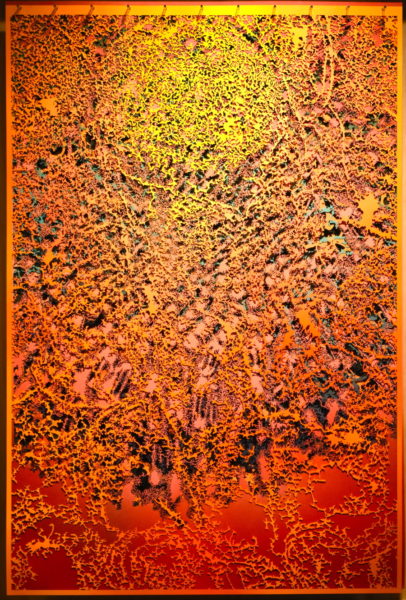
I try to spend as much time in the studio as possible, but my full-time job cuts into the hours that are available to me. Business is the third wheel in my relationship with art, and I have to work on changing this dynamic. Right now, selling my art comes after working the day job and creating new works. I need to put business time on an equal footing with studio time, and eliminate the need for the day job.
How have you evolved as an artist?
My daughter went to the Ringling College of Art and Design. While there, she got a job in the print shop and learned how to run their laser cutter. One day, when things were slow, she took a photograph of one of my pieces and drew it into the computer. At the time, I was spending nine months cutting images into brass by hand, but with the laser she was able to cut out the image in under 30 minutes. When she showed me what she’d done, I thought, “Wow, I can really work with this.” That’s when I started making new designs specifically for the laser, which allows me to create images that are more complicated than those I could’ve cut by hand.
How have you evolved as an entrepreneur?
I am just starting to explore this role. Even though it’s only been a few months, participating in CHF’s Business Accelerator Program has greatly focused my thinking in this area. I look forward to continuing the relationships that I have started through CHF well after the program ends.
What role do artists play in our society? What role SHOULD they play?
Artists play many roles in society, not just one. They are instrumental in changing the way we think about art, culture, people, societal norms, environmental issues—pretty much everything that goes on in the world. Without artists, people would not be able to shift perspective, and understand different views and ideas. No single artist does it all, however; it takes a village.
Anything else you would like us to know?
The more artists there are, and the more connected we are to each other, the better off our entire society will be.
For more information on Blake Conroy, see his official CHF bio.




